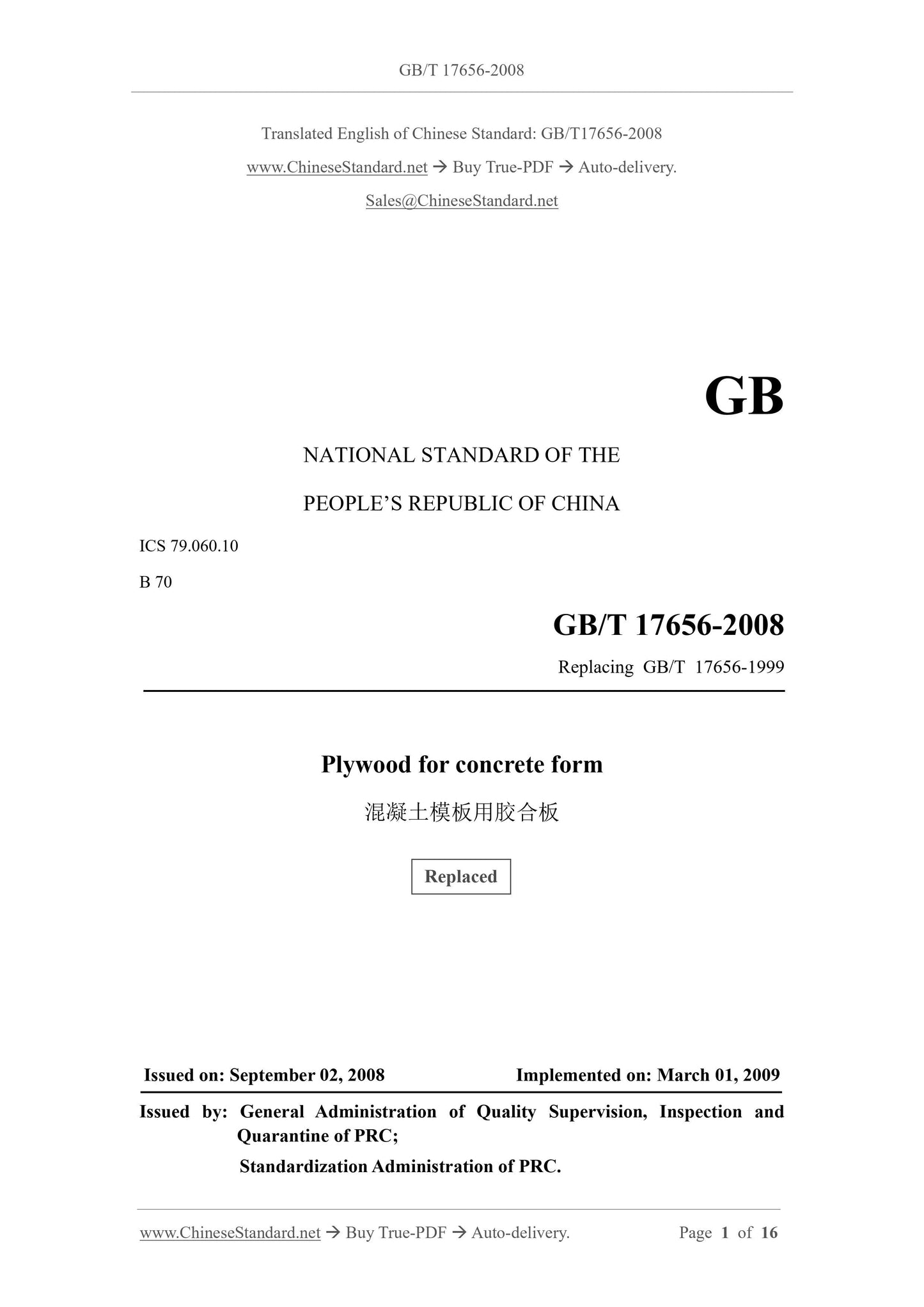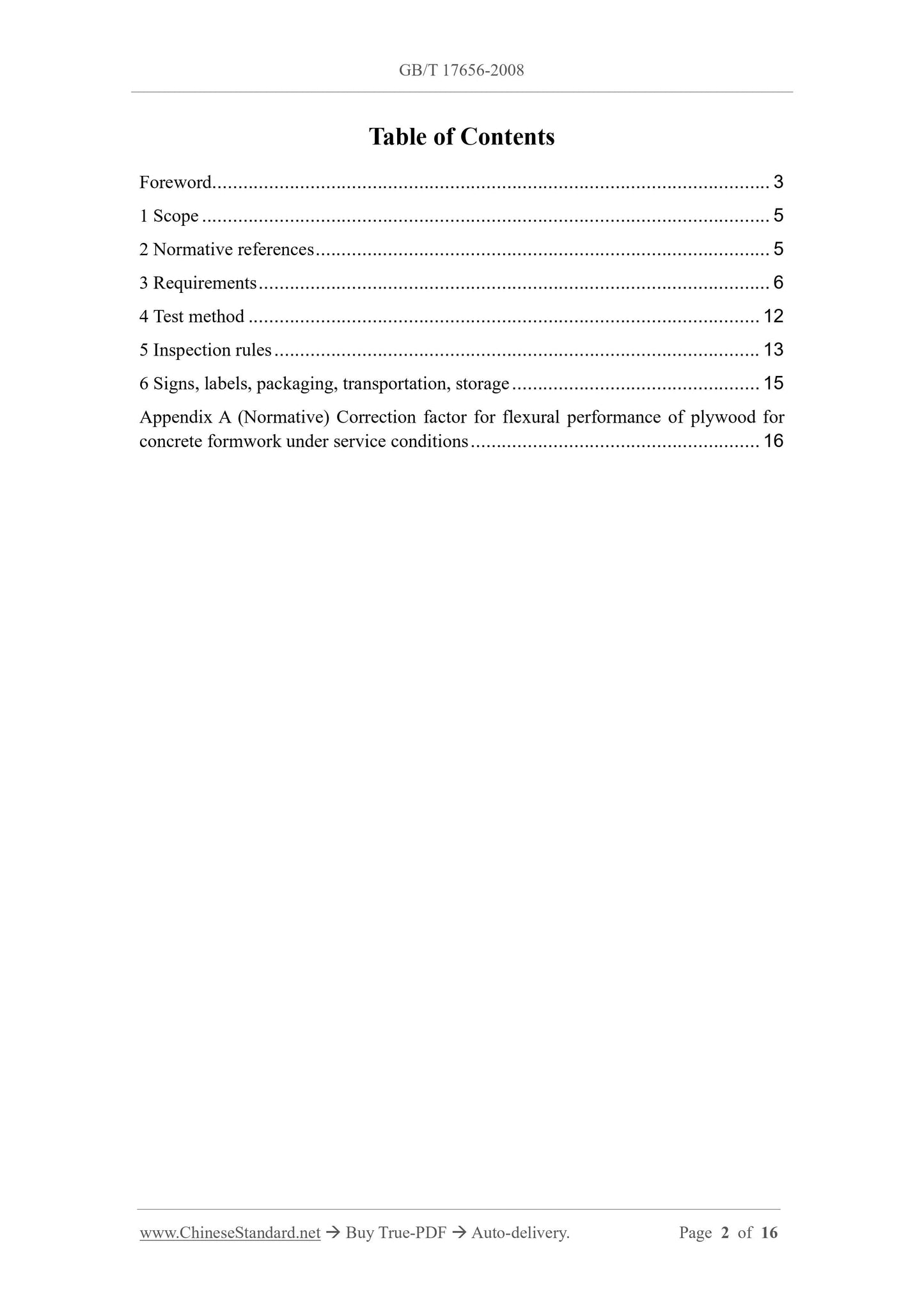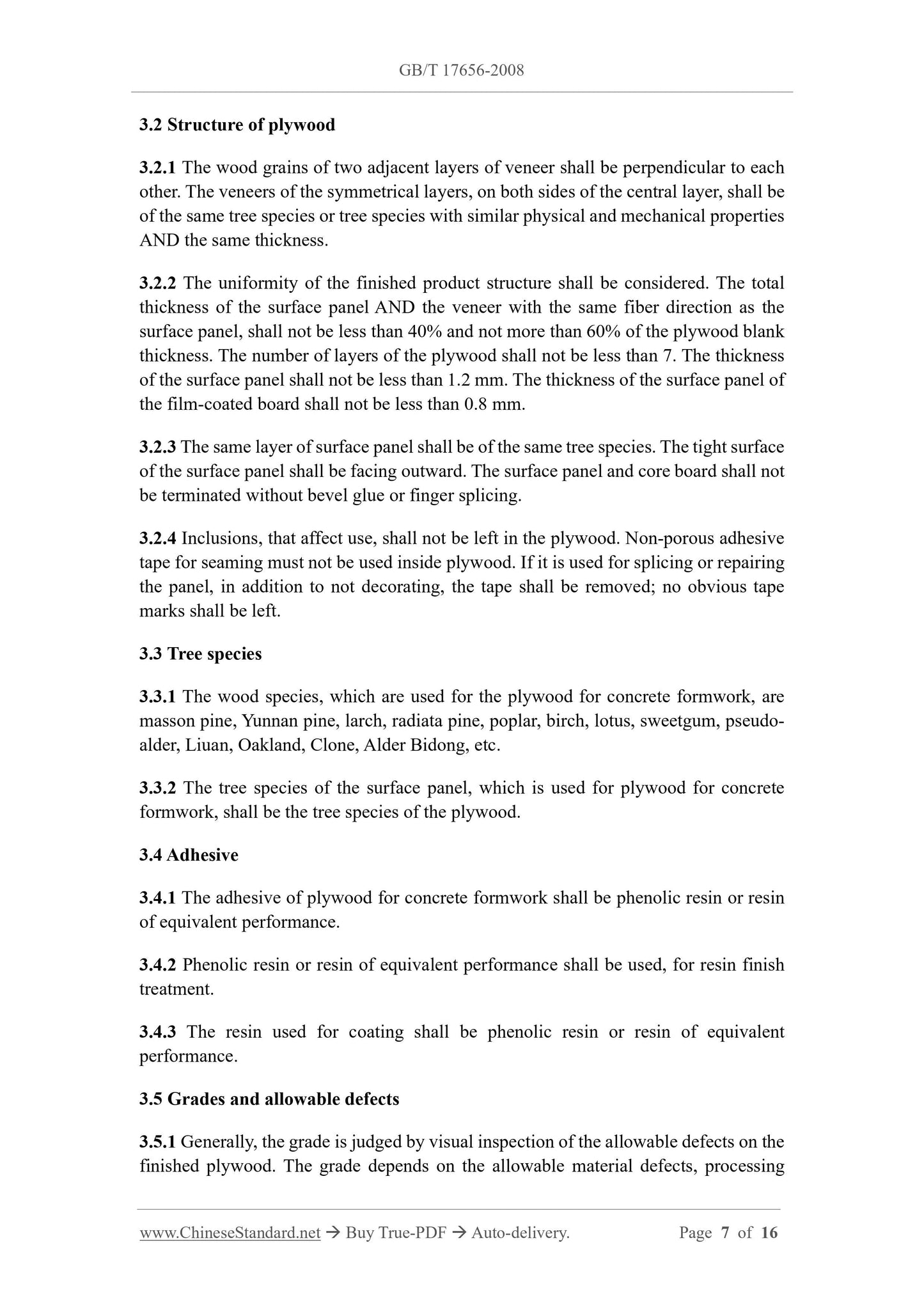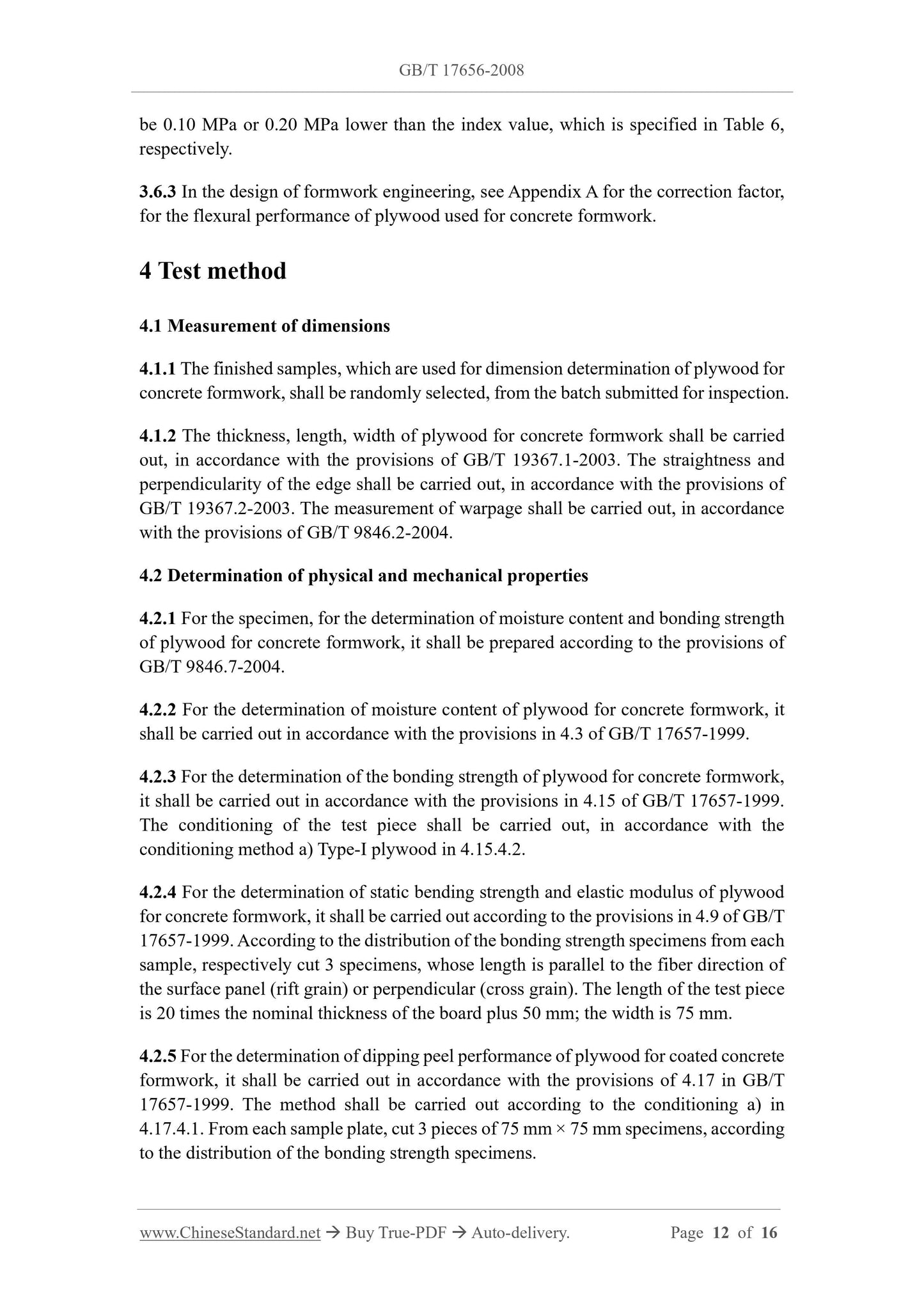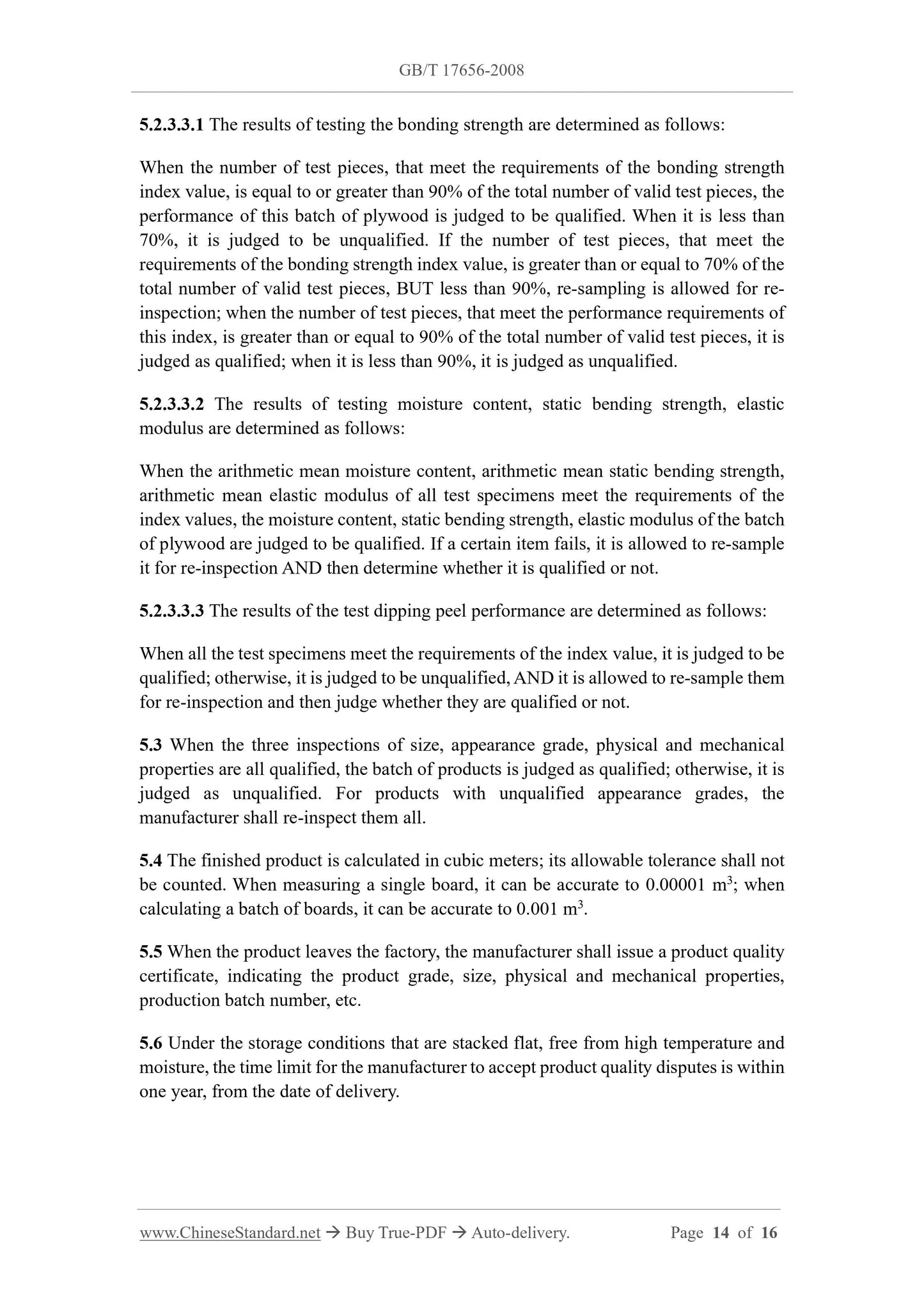1
/
of
6
PayPal, credit cards. Download editable-PDF and invoice in 1 second!
GB/T 17656-2008 English PDF (GB/T17656-2008)
GB/T 17656-2008 English PDF (GB/T17656-2008)
Regular price
$105.00
Regular price
Sale price
$105.00
Unit price
/
per
Shipping calculated at checkout.
Couldn't load pickup availability
GB/T 17656-2008: Plywood for concrete form
Delivery: 9 seconds. Download (and Email) true-PDF + Invoice.Get Quotation: Click GB/T 17656-2008 (Self-service in 1-minute)
Newer / historical versions: GB/T 17656-2008
Preview True-PDF
Scope
This standard specifies the requirements, test methods, inspection rules, marking,labeling, packaging, transportation, storage of plywood for concrete formwork.
This standard applies to plywood for concrete formwork, which is made of wood veneer,
including:
a) Plywood for concrete formwork, without surface treatment (referred to as plain
board);
b) Plywood for concrete formwork, after treated with resin veneer (referred to as
resin-coated board);
c) Plywood for concrete formwork, that has been veneered with impregnated film
paper (referred to as film-coated board).
Basic Data
| Standard ID | GB/T 17656-2008 (GB/T17656-2008) |
| Description (Translated English) | Plywood for concrete form |
| Sector / Industry | National Standard (Recommended) |
| Classification of Chinese Standard | B70 |
| Classification of International Standard | 79.060.10 |
| Word Count Estimation | 10,165 |
| Date of Issue | 2008-09-02 |
| Date of Implementation | 2009-03-01 |
| Older Standard (superseded by this standard) | GB/T 17656-1999 |
| Regulation (derived from) | National Standard Approval Announcement 2008 No.14 (Total No.127) |
| Issuing agency(ies) | General Administration of Quality Supervision, Inspection and Quarantine of the People's Republic of China, Standardization Administration of the People's Republic of China |
| Summary | This standard specifies the requirements for concrete form plywood, test methods, inspection rules and signs, labels, packaging, transport and storage. This standard applies to concrete formwork made ??of wood veneer plywood, including: a) without surface treatment of concrete formwork plywood (referred to as vegetarian plate), b) by the concrete formwork plywood treated with resin finishes (referred Tu sheet), c) concrete formwork was impregnated paper treated with veneer plywood (short film board). |
Share
